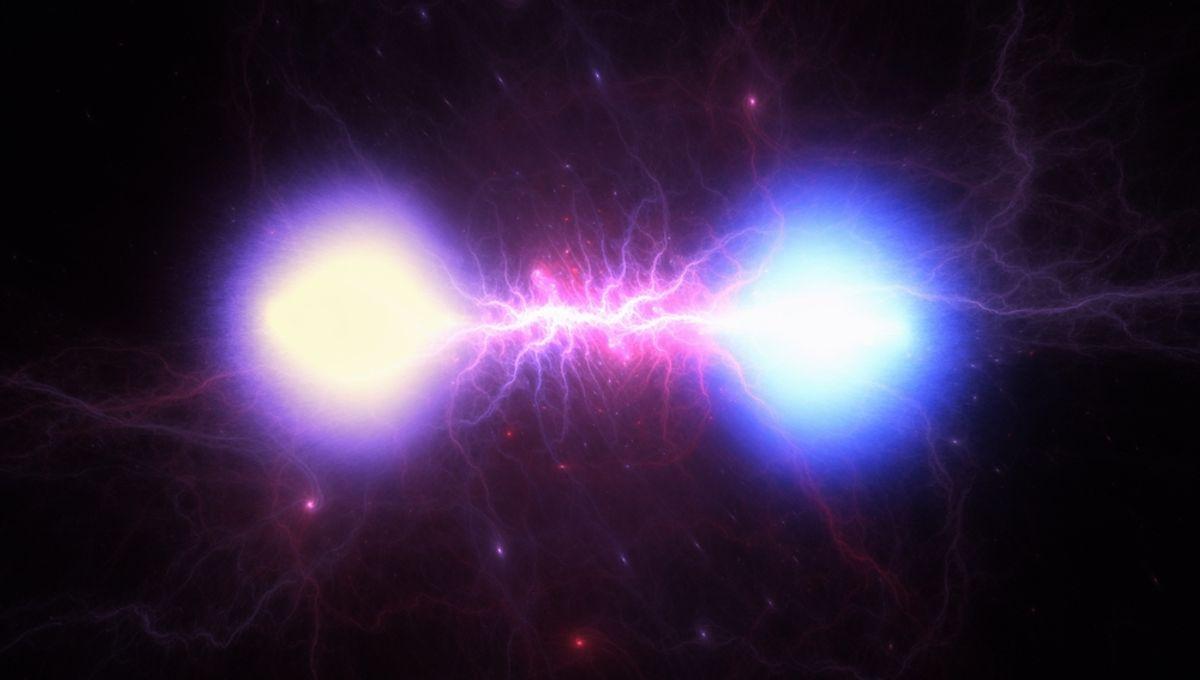-
Ροή Δημοσιεύσεων
- ΑΝΑΚΆΛΥΨΕ
-
Σελίδες
-
Blogs
-
Forum
Scientists Have Finally Measured How Fast Quantum Entanglement Happens

Scientists Have Finally Measured How Fast Quantum Entanglement Happens
Last year, a team of scientists working at TU Wein University measured the speed of quantum entanglement in action for the first time, pouring cold water on the idea that the process occurs instantaneously.
Quantum physics is the study of the frankly downright bizarre world of atoms and subatomic particles, such as neutrons, photons, and electrons. At these microscopic levels, time can be “negative” and particles can exist in two places at the same time – think: Schrödinger’s cat – thanks to a concept known as superposition. Another peculiarity observed at these subatomic levels is quantum entanglement. When two or more particles become entangled, they retain a connection, even over mind-bogglingly vast distances. This means the particles could be light-years apart and still influence each other. “You could say that the particles have no individual properties, they only have common properties. From a mathematical point of view, they belong firmly together, even if they are in two completely different places,” Joachim Burgdörfer, a professor at the Institute of Theoretical Physics at TU Wien, said in a press release. Until recently, it was thought that entanglement occurred instantaneously. Now, Burgdörfer and his team have shown that quantum entanglement occurs not instantly, but at dazzlingly fast speeds. These processes cannot be measured in seconds or milliseconds. They are measured in attoseconds, equal to one-quintillionth (1,000,000,000,000,000,000) of a second. To determine exactly how fast particles become entangled, the researchers had to create this entangled state. This was achieved by blasting atoms with a high-intensity, high-frequency laser pulse. One electron would be expelled from the atom. Sometimes a second electron would also be affected, entering into a higher energy state and shifting its orbit, but remaining bound to the atom’s nucleus. “We can show that these two electrons are now quantum entangled,” said Burgdörfer. “You can only analyze them together – and you can perform a measurement on one of the electrons and learn something about the other electron at the same time.” Using two laser beams, the physicists demonstrated how the so-called “birth time” of the departing electron is connected to the electron that remains. While the exact time “is not known in principle”, says Burgdörfer, the research suggests that when the left-behind atom is in a state of higher energy, it’s likely the departing electron flew off at an earlier point in time. In contrast, if the left-behind atom is in a state of lower energy, it’s more likely to occur later. In the latter case, it took 232 attoseconds on average. “The electron doesn't just jump out of the atom. It is a wave that spills out of the atom, so to speak – and that takes a certain amount of time,” Iva Březinová, an assistant professor at the Institute of Theoretical Physics at TU Wien, said in a press release. “It is precisely during this phase that the entanglement occurs, the effect of which can then be precisely measured later by observing the two electrons.” As the world gears up to a future of quantum computing, understanding the nature and processes involved in quantum entanglement is becoming ever more crucial. The study was published in the journal Physical Review Letters.


